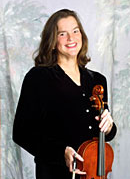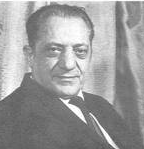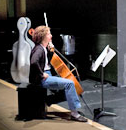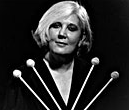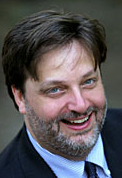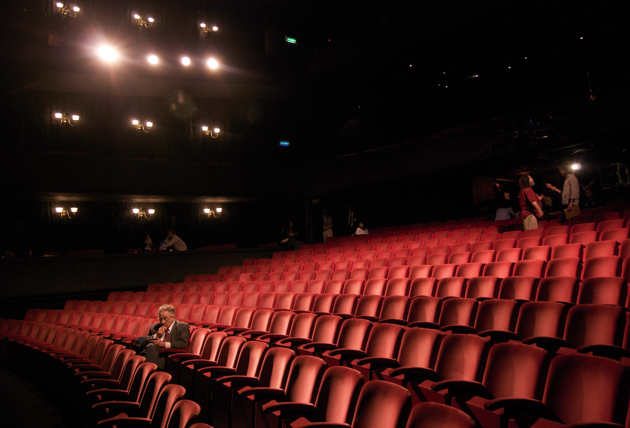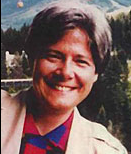Playing For Patients
March 21, 2006Penny Anderson Brill, a violist with the Pittsburgh Symphony, has been developing a music and wellness program for orchestra musicians for the past six years. She has a lot of experience performing in a variety of health care settings.
In this article, Penny shares some tips she has learned over the years while performing for patients in a hospital or other healthcare institution. Her advice ranges from common sense hygiene (wash your hands frequently) to repertoire suggestions and suggestions for talking to individual patients.
String Players and Health
Playing a string instrument is a true joy, but is fraught with all sorts of potential health issues, from repetitive stress injuries to general aches and pains. Samantha George, Associate Concertmaster of the Milwaukee Symphony Orchestra, has had her share of violin-related health issues. She worked closely with Dr. Alice Brandfonbrener, the Music Medicine expert, to overcome her own problem and, in the course of healing herself, became quite conversant with many of the issues that confront string players.
In this introductory article, Samantha offers some basic, practical advice on how string players can avoid some common injuries, and what you should do if you find yourself in pain.
The Extraordinary Carmine Caruso
Lucinda Lewis, French hornist with the New Jersey Symphony and author of Broken Embouchures, discusses how to apply famous embouchure methods to your playing. She quotes from an interview she conducted with Laurie Frink, Carmen Caruso’s protégée, and warns against using Caruso’s exercises without fully understanding his entire method or working with a properly-trained instructor.
Symphonic Education Programs
Yvonne Caruthers, cellist with the National Symphony, has been involved with her orchestra’s Education Department for many years. She also designs programs for the Smithsonian’s education branch, and has many exciting ideas to share about how orchestra musicians can develop and enjoy educational and outreach programs.
In her introductory article, Yvonne presents a brief history of how educational services and orchestral residencies in under-served communities were introduced to major orchestras. She goes on to describe some of her own and her colleagues’ first experiences with an orchestra residency in Alaska – they were hit by some pretty tough questions from the 5th & 6th graders! National Symphony musicians have been through several residencies in the past few years, and Yvonne offers her insights on how to make them rewarding for both the students and the orchestra players.
Yvonne has been interviewing and soliciting articles from colleagues around North America regarding orchestral education and outreach programs, and has a wonderful collection of articles in the pipeline. Please contact us if you’d like to share your own orchestra’s experiences, or if you have any questions about outreach programs.
Common Health Problems for String Players
The life of a string player is fraught with all sorts of potential health hazards. In her second article, Samantha George, Associate Concertmaster of the Milwaukee Symphony Orchestra, defines some of the most common maladies afflicting string players: tendonitis, carpal tunnel syndrome, tennis elbow, and focal dystonia. She describes common symptoms and offers some advice about treatment, along with links to some helpful websites.
The Music Director Search
Bruce Ridge, bassist with the North Carolina Symphony and President of ICSOM, served as the Chair of his orchestra’s Search committee when they were looking for a new Music Director. Bruce has agreed to share his expertise in this area, and to solicit articles from other orchestras with innovative Music Director Search stories to tell.
In this introductory article, Bruce explains the elements he believes are essential to a successful Music Director search, and describes the additional topics he plans to cover in his column.
Musicians as Educators: Reflecting on Learning Experiences
How should you go about designing your personal teaching style or your orchestra’s educational programs? What of your early music learning experiences should you carry over to your own teaching?
Ruth Cahn, Director of the Eastman School of Music’s Summer Session, percussion instructor in their Community School, and former member of the Rochester Philharmonic for over 3 decades, presents some fascinating questions for you to consider when contemplating your personal educational plans.
Ruth describes several different styles of teachers that helped formulate her own musical passage, and details some methodologies she recommends. She then presents a list of quotes about inspirational teachers, made by the students in her Arts Leadership Course, and discusses the importance of sharing this inspiration with symphony Board members.
Ruth’s article will help you remember that “understanding and reaffirming our musical roots is a powerful step in connecting others to music.”
Marketing the Orchestra
Chris Stager, a nationally-known consultant in audience development for the performing arts, has agreed to answer all those questions we musicians have about the proper way to market an orchestra. Is it a science or an art? Or a little bit of both?
His first column explains the difference between PR and Marketing, an often misunderstood distinction.
Please send in your marketing questions so that Chris can address them in a future column.
Empty Seats – What Can We Do?
Looking out at the audience during a performance and seeing lots of empty seats is a disheartening experience for any orchestral player. We’ve all heard that old adage about “the graying audience members,” but is it really so? Is there anything we as musicians can do to reverse this trend?
Tina Ward, a clarinetist with the Saint Louis Symphony, has been very active in her own orchestra as ICSOM delegate and has served on many orchestra committees. She was also an American Symphony Orchestra League (ASOL) Orchestra Management Fellow, which gives her a unique perspective on many aspects of orchestra life.
Tina offers her thoughts on what we musicians can do to improve the concert experience for the audience, in terms of employing audio-visual elements, making the concert more exciting for the audience, and enhancing the concert experience as a social event. Her lists of action items for orchestra musicians should instigate some lively conversations among your colleagues!
Mouthpiece Pressure – Fact or Myth
For brass players, mouthpiece pressure is a hot topic! Most have been warned against it since they started playing. But is it really so bad?
Lucinda Lewis, French hornist with the New Jersey Symphony and author of Broken Embouchures, a book dealing with the overuse and performance-related injuries of brass players, offers a second look at mouthpiece pressure. She cites the lack of scientific evidence that mouthpiece pressure is damaging, and discusses the mechanics of how healthy playing can protect brass players from mouthpiece-pressure damage.

